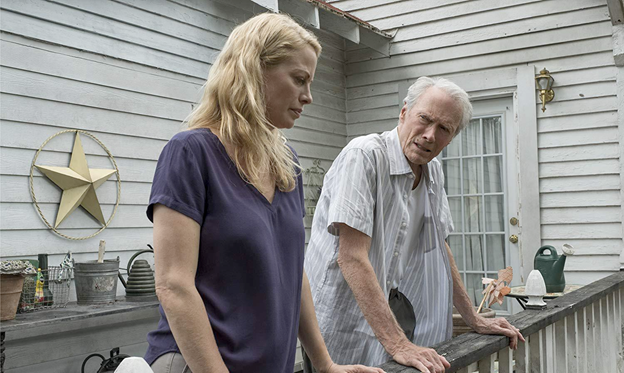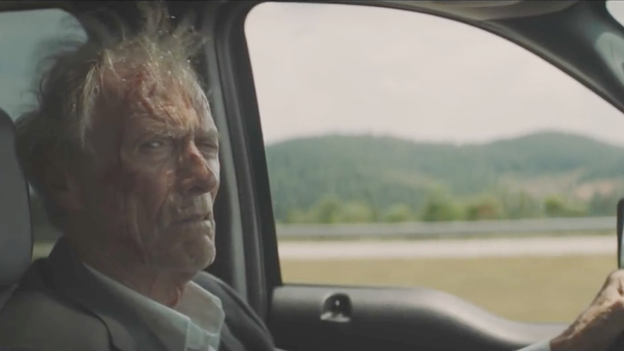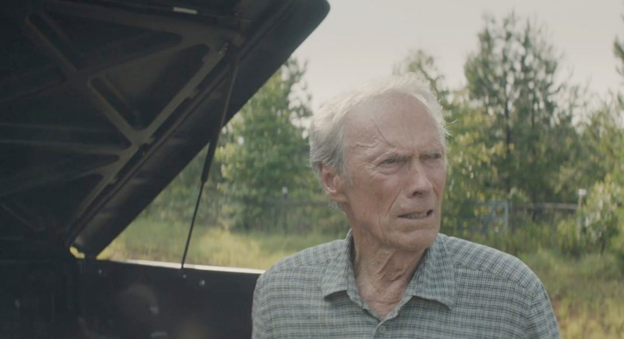With SULLY, THE 15:17 TO PARIS, and now THE MULE, I’d wager that Clint Eastwood has entered a phase in his life that has become enamored with the idea of how we can be heroes without the pistol around our waist. After all, even an old cowboy knows when it’s high time to stop shooting. I admire the premise, but I do think Eastwood has fallen strictly to the left of current right-wing politics, much to his own dismay. After all, we’re talking about a man who likened Trump and Clinton to Abbott and Costello. Because of this, he ought to start considering what he can say about the America he remembers and the America he lives in today. In his old age, there’s no shortage of wisdoms he can impart on us—even if he is a grumpy Republican grandpa—and THE MULE does a successful job at showcasing kernels of these profundities. Unfortunately, he’s still a little too caught up in the mythos of the American hero, the naive everyman legend, to follow through on that promise.
THE MULE, not unlike many other Eastwood pictures, paints the portrait of a deeply flawed American man. A no-good father and a useless husband, Eastwood’s Earl Stone is a man on his last legs, trying to redeem himself nine decades into his life. Through a hook-up made at his granddaughter’s wedding reception, he finds himself working as a drug mule for a Mexican cartel in order to support those he cares for. Eastwood doesn’t try and justify Stone’s behavior, holding him just as accountable as the cartel leaders hovering over him. And in true cowboy fashion, Eastwood reminds his viewers that Stone never needed money to fall back into the good graces of his family. It’s all old-hat for Eastwood; after all, westerns are as anti-capitalist as they come, from villainous railroad tycoons to glory being found outside of material wealth. THE MULE is often pedantic and moralistic, but beneath the surface of the New York Times article that inspired this film are some poignant statements about the culture America has normalized over the last two decades.

Pictured: Making amends with your daughter after you say “But he’s draining the swamp” during Thanksgiving dinner
It’s a shame, because as a result, THE MULE is divided into two halves: a run-of-the-mill cartel drama, and an oddly engaging study of American culture. If Eastwood would give up on capturing old Hollywood heroics in his films and just direct a two-hour study of his divided nation, he’d score the home run he’s looking for. What I’d give to see a film on an Appalachian miner, out of a job, frustrated with his nation’s economy, directed by the posterboy of ’60s Americana. Eastwood, perhaps more than any other director working right now, could give us a great film about the fly-over states that voted for Trump. If he’d make a point not to show their heroism, but their victimization, he’d be on a straight shot to scoring that centennial masterpiece. All that is to say, THE MULE is a far cry from the quality of filmmaking he’s provided in AMERICAN SNIPER and even SULLY, and yet somehow it is far more thematically potent than either of those films.
You see, despite its trite plotting, haphazard acting, lazy dialogue, and rote structure, Eastwood is incredibly invested in making a statement about America and its people, from our obsession to smartphones or our inability to welcome foreigners into our subcultures. It’s rather telling that Eastwood’s second charitable effort with his drug money is to reopen a polka hall: a communal space for his subculture. Eastwood is deeply invested in pointing out America’s tribalism, our xenophobic inability to welcome a stranger into our inner circle. And Eastwood points out that he perpetuates this culture as much as any other character in the film. Thus, when THE MULE acts as a soapbox for Eastwood’s ideological queries, it’s rapturous. To Eastwood, this is where the Republican party should align in America, making a clear point that he no longer identifies with the off-the-wall insanity of Trump’s America.

Dirty & Hairy
Yes, THE MULE is as patriotic as any Eastwood film, but it makes a concerted effort to criticize America and not the victims of its system. A scene involving a lawman unjustly harassing the film’s drug-peddling Mexican leads cleverly includes a detail in which Eastwood defuses the situation by stating that he hired the two men in front of a Home Depot. It’s a short beat, but it’s indicative that Eastwood places at least a fraction of the blame on white Americans who perpetuate the abuse of cheap labor from illegal immigrants. In fact, African-Americans are the only race that have no antagonistic portrayal in THE MULE, with Eastwood playing a casual racist so that he gets that point across. He also goes so far as to criticize American law enforcement, whose sole priority are statistics instead of actual progress. By the end of THE MULE, Bradley Cooper’s team of investigators arrest nobody seriously affiliated with the cartel, but celebrate that they put a 90-year-old man in prison.
All of this is to say that THE MULE is a film littered with fantastic thematic beats, but bogged down greatly by its phoned-in filmmaking. Delete the scenes that drive the plot and only keep the sociopolitical filibustering and you’ve got a surprisingly solemn portrait of a divided culture. Eastwood literally recreating the Pacino/De Niro diner chat from HEAT inside of a Waffle House might be the greatest flex of the year, not to mention that it ends with an outstanding one-liner. Is it a refute of political correctness in America? Sure. Does it occasionally register as an angry grandfather complaining over Thanksgiving dinner? Yes. But Eastwood is also surprisingly articulate in his old age, making a point that we should let foreigners into our inner circles, whether it be old men in female biker gangs or Mexicans at Texan BBQ joints.

Yikes, I got a trunk full of viagra, pig!
That isn’t to say that THE MULE is composed of entirely prophetic statements. The single scene that left a sour taste in my mouth (and remains a thorn in the film’s side long after I left the theatre) is a sequence where Bradley Cooper pulls over the wrong pickup truck due to racial profiling. The scene in and of itself could have been a great spotlight of white America’s naiveté in the ongoing drug war, but is overshadowed by a shallow and tasteless attempt at humor revolving around the man’s fear of being pulled over. Look Clint, with the current dire state of affairs when it comes to police violence, maybe don’t make a joke out of it? If you’re already astute enough to comment on racial profiling, then don’t treat these victims like crybabies.
Having said all that, this is arguably the most personal an Eastwood film has felt in years. Despite the directing being on autopilot, there is a tenderness to the cultural commentary prevalent here. If Eastwood would stop chasing white-American heroism, and keep THE MULE from being misconstrued as the story of Pegasus, his messages about the country’s cultural friction might not be countered with so many detractors. In the end, the biggest reason Eastwood has as many naysayers in the current political climate is because his conservatism is easily conflated with current Trumpisms, but other than a trademark stubbornness on gun reform, I admire Eastwood for being a conservative who is willing to hold white America accountable for this divisive era. After all, it’s nice to see Eastwood in front of the camera again. His age seems to be getting in the way of directing actors, which is why all of the film’s best scenes involve veterans like Cooper just acting alongside him. But good God, Clint has two threesomes, yells about millennials being addicted to the internet, and orders his burgers at a place called Gunny’s, it’s undeniably the most him movie to date.
















Comments